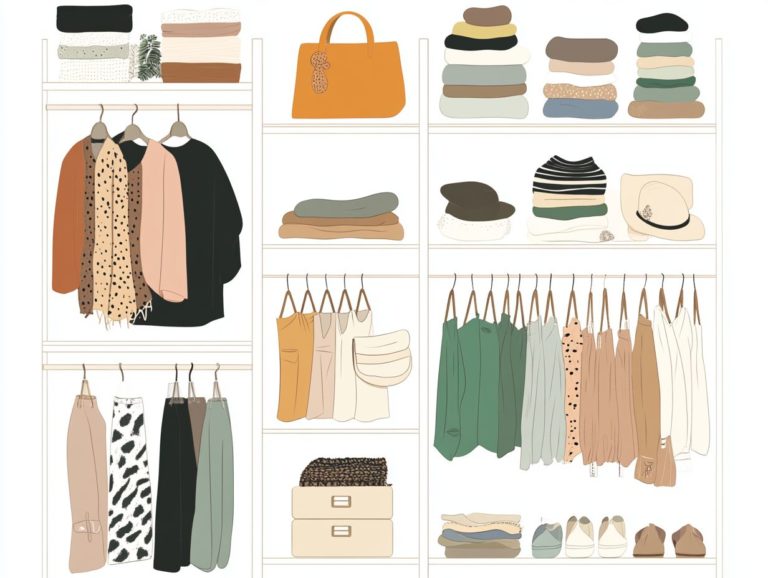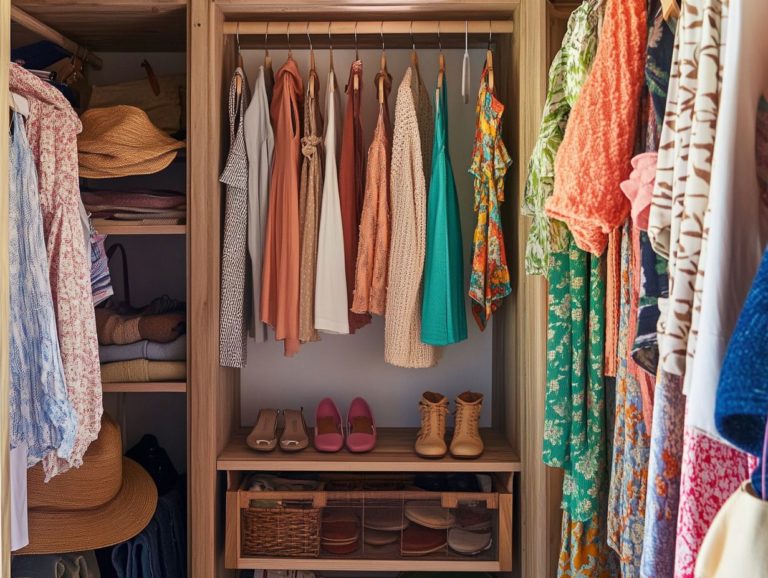How to Maintain the Longevity of Essential Items
Maintaining essential items is vital. It ensures they serve you effectively over the years, saving you money and hassle.
Whether it s clothing, household appliances, or electronics, understanding how to care for and store these items can greatly extend their lifespan.
This article delves into the significance of proper maintenance, offers practical tips for commonly used essentials, and highlights when it s time to consider replacing items with quality alternatives.
Prepare to elevate the longevity of your indispensable belongings!
Contents
- Key Takeaways:
- Why is Maintaining Essential Items Important?
- Common Essential Items and Maintenance Tips
- Long-Term Storage of Essential Items
- Replacing Essential Items
- When to Replace and How to Choose Quality Items
- Frequently Asked Questions
- What are essential items and why is it important to maintain their longevity?
- How can I extend the lifespan of my essential items and ensure their product health?
- What are some common mistakes people make that can shorten the lifespan of essential items?
- How can I properly clean my essential items to ensure their longevity?
- Why is regular maintenance important in maintaining the longevity of essential items?
- What should I do with essential items that are no longer useful?
Key Takeaways:
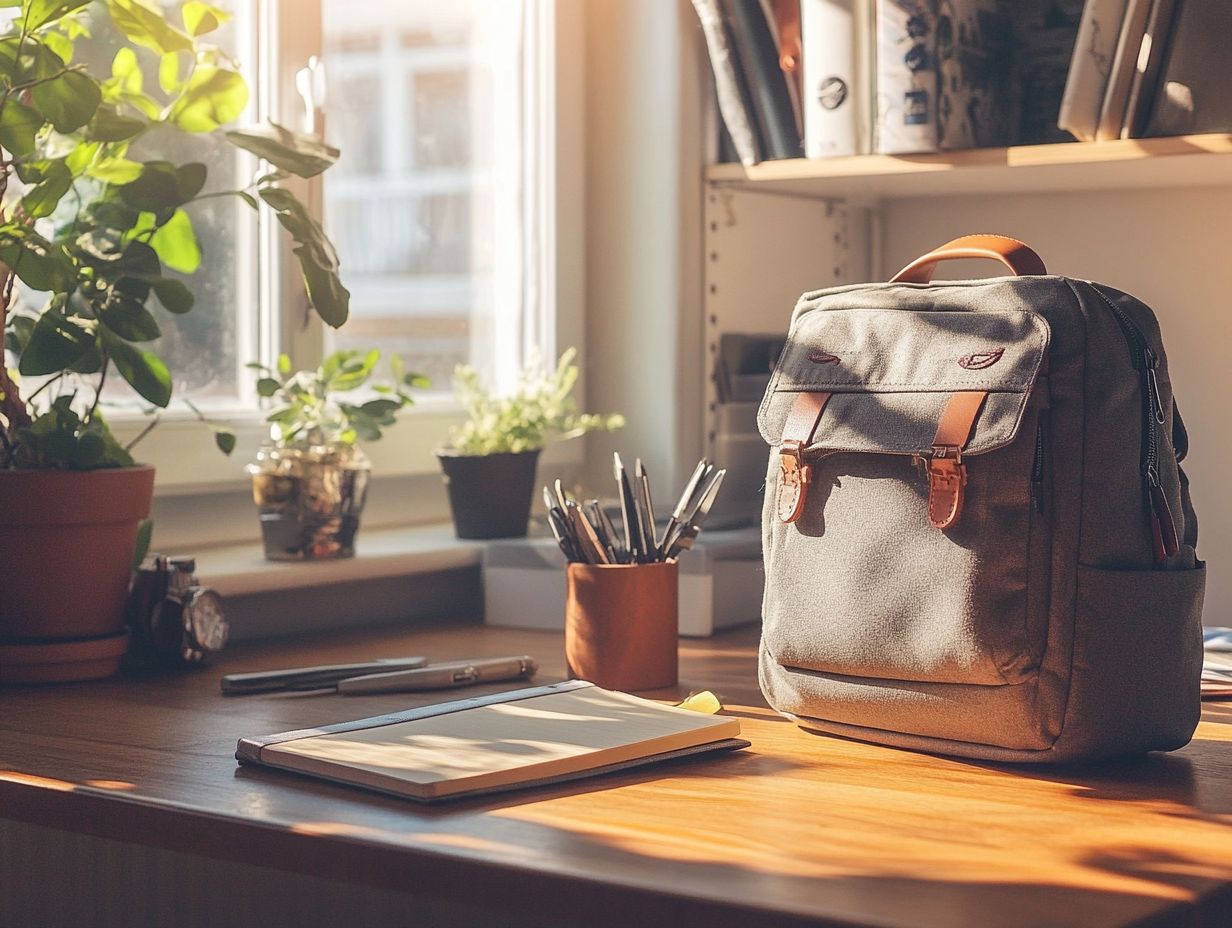
- Proper maintenance of essential items can save you time and money in the long run.
- Regular maintenance keeps essential items working well.
- Proper storage and timely replacement can prolong their lifespan.
What are Essential Items?
Essential items encompass a variety of tools and equipment that are important for your everyday tasks. Whether you’re someone who likes do-it-yourself projects or an experienced worker, having the right cleaning tools, power tools, and garden tools is vital for completing tasks efficiently and ensuring user safety.
Cleaning tools like brooms, mops, and vacuums are your allies in maintaining a tidy and healthy living environment, effectively banishing dust and allergens. Power tools, ranging from drills to saws, give you the power to tackle projects from simple repairs to complex constructions with ease. And let’s not forget garden tools shovels and pruners are essential for those looking to cultivate outdoor spaces.
In every category, proper tool maintenance is key. It not only prolongs the life of your equipment but also enhances safety by reducing the risk of accidents. Understanding the diverse applications and care strategies for these essential items can significantly elevate your home maintenance and improvement efforts.
Why is Maintaining Essential Items Important?
Maintaining your essential items is crucial for ensuring their functionality and longevity. By engaging in regular maintenance practices like routine inspections and proper storage you can effectively prevent wear and tear that might compromise the performance of your equipment.
By prioritizing tool care, you greatly enhance the durability and efficiency of your essential tools.
Benefits of Proper Maintenance
Proper maintenance of essential items offers a host of benefits that boost their efficiency and longevity while ensuring your safety. You’ll save money on repairs and replacements, which is always a win!
Regular maintenance also prevents dirt and moisture buildup that can lead to rust. By keeping your equipment clean, you can significantly extend the lifecycle of your tools.
By prioritizing maintenance tasks, you can avoid those costly breakdowns that disrupt workflows and lead to expensive emergency repairs. For example, routinely inspecting blades for sharpness, lubricating moving parts, and clearing debris will keep your tools running smoothly and effectively. Using protective coverings can safeguard your valuable equipment from moisture and corrosive substances.
These practices not only enhance the performance of your tools but also create a safer working environment by minimizing the risk of accidents. Ultimately, diligent upkeep cultivates a reliable set of instruments that can tackle tasks efficiently, giving you peace of mind as you work.
Common Essential Items and Maintenance Tips
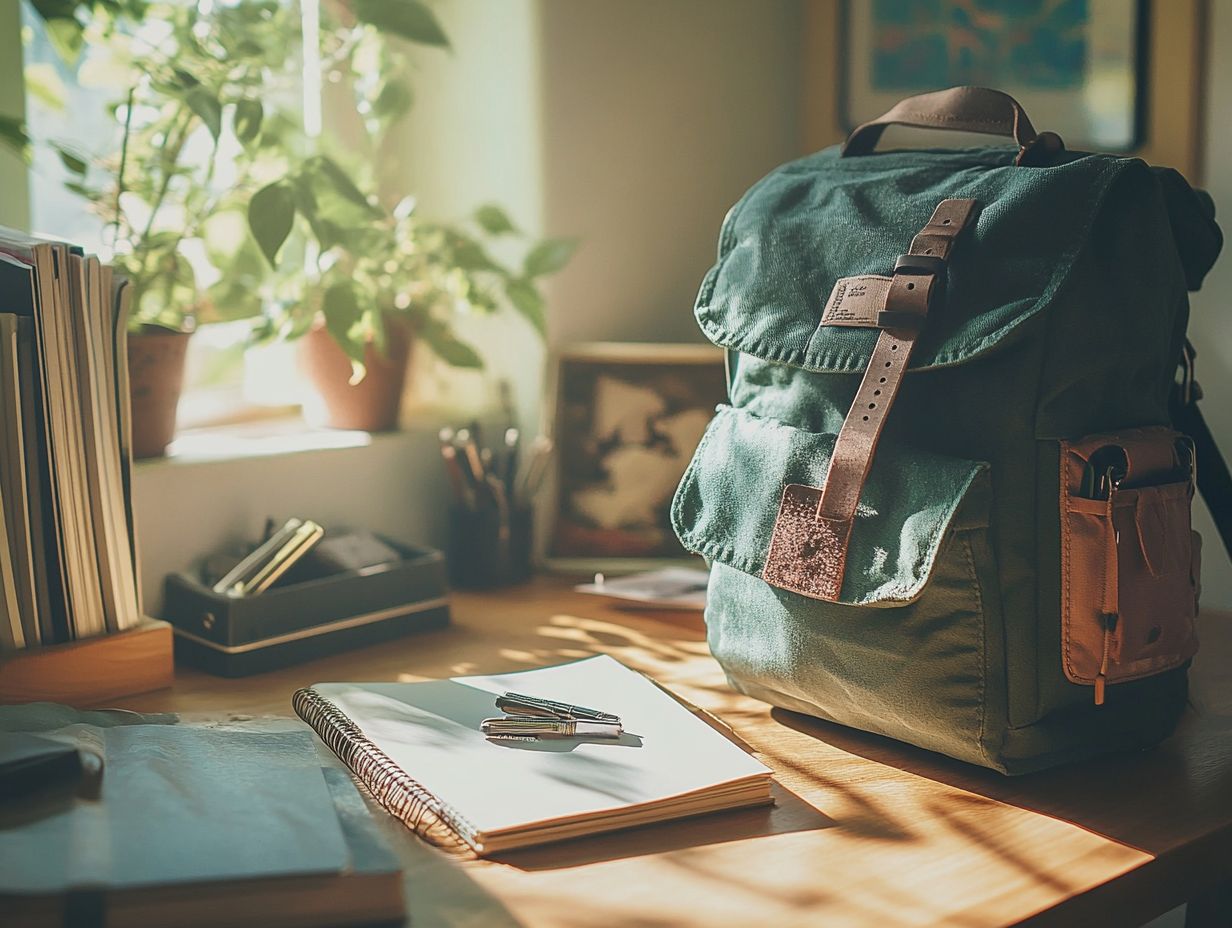
When considering essential items, you’ll find that common categories encompass cleaning tools, power tools, and garden tools, each demanding tailored maintenance tips to achieve optimal performance and longevity.
Grasping the unique requirements of these tools is crucial for both the dedicated DIY enthusiast and the seasoned professional.
Clothing and Accessories
Clothing and accessories are not just items; they re investments that deserve your attention. Proper maintenance think regular cleaning and smart storage is key to ensuring durability and longevity.
By adopting effective practices, you can significantly extend the lifecycle of your favorite pieces. Caring for fabrics and materials does more than keep them looking good; it actively prevents premature wear and tear.
For optimal results, tailor your cleaning methods to each fabric type. Use gentle detergents for delicate materials and reserve machine washing for sturdier options.
Proper storage techniques are vital. Utilize breathable garment bags to maintain shape and texture. Avoid cramming your closet.
Regularly inspect your items for damage and address repairs promptly. This practice can work wonders in prolonging the life of your cherished pieces.
Household Appliances
Household appliances are essential components of your daily life. Keeping them in peak condition requires regular maintenance to maximize efficiency and ensure safety.
Engaging in practices like routine inspections and thorough cleaning is paramount. Neglecting these tasks can lead to breakdowns and costly repairs.
Enhance the lifespan of your appliances by checking for signs of wear and tear, such as frayed cords or loose connections. Simple tasks like dusting the refrigerator coils can significantly improve airflow.
Set reminders to descale your coffee machine or change air filter components. This will help maintain optimal function and ensure safety, minimizing the risk of malfunctions.
Electronics
Electronics are essential in your daily life and require careful maintenance. Proper storage and regular cleaning help prevent dust buildup and operational issues.
Understanding the specific maintenance needs of your devices can significantly extend their lifespan. For example, regularly wiping screens with microfiber cloths helps prevent scratches.
Store devices in a controlled environment, away from extreme temperatures and humidity. Using protective cases provides an additional layer of defense against accidental drops.
Don’t forget to regularly check for software updates and run antivirus scans. This not only enhances performance but also ensures smooth functionality.
Start maintaining your devices today to see the difference!
Long-Term Storage of Essential Items
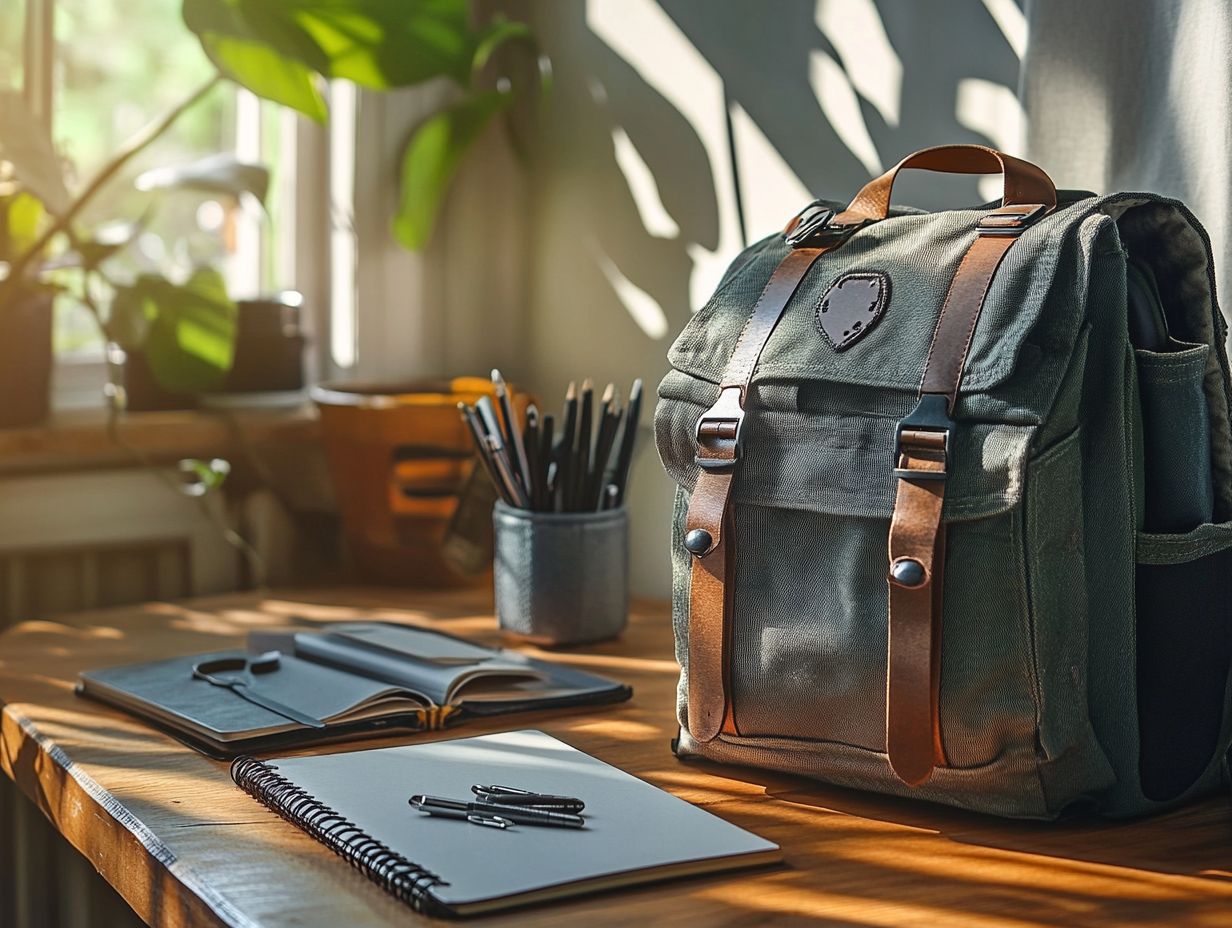
Maintaining the long-term storage of essential items is vital for preserving their condition. To achieve this, employ effective strategies to prevent rust and damage.
This includes using proper storage techniques and conducting routine inspections. These steps ensure that your tools remain in optimal working order.
This practice is crucial for managing both personal and professional tools effectively.
Best Practices for Storing Essential Items
Implementing best practices for storing your essential items is crucial for ensuring their longevity and functionality. This includes proper organization and protective measures to reduce damage.
Creating a clutter-free environment is key. It allows your items to be easily accessible and protected from environmental factors. Techniques such as using labeled bins, moisture-absorbing sachets, and padded storage solutions can help maintain the condition of your valuable tools.
Incorporating systematic rotation and checking your items regularly ensures that they are used in a timely manner, reducing the chances of damage from disuse or neglect. A well-organized storage system not only extends the life of your essential tools but also contributes to a more efficient workspace, enabling you to focus on your tasks with minimal distractions.
Replacing Essential Items
Understanding when to replace essential items is crucial for maintaining the health of your products and ensuring user safety. Outdated or worn-out tools can lead to inefficiency and pose potential hazards.
Regular evaluations of your items are vital. This allows you to select high-quality replacements that align with your current needs.
When to Replace and How to Choose Quality Items
Determining when to replace essential items requires a careful evaluation of their condition and functionality. Ensure that any replacements you choose are of the highest quality to maintain user safety and operational efficiency.
Embracing specific maintenance tips can enhance your decision-making process. Factors like wear and tear, technological advancements, and safety regulations play pivotal roles in your assessment.
Regularly inspecting your items for signs of damage or diminished performance will enable you to pinpoint when a replacement is truly necessary. Conducting routine inspections can help in this process.
When selecting new products, prioritize quality over price. Opting for trusted brands known for their durability and reliability can ultimately lead to greater savings in the long run. Delving into customer reviews and comparing warranties provides valuable insights into a product’s longevity and overall value, including product durability.
By considering these factors, including the importance of tool care and proper storage, you ll find that making informed decisions becomes a much more seamless endeavor.
Frequently Asked Questions
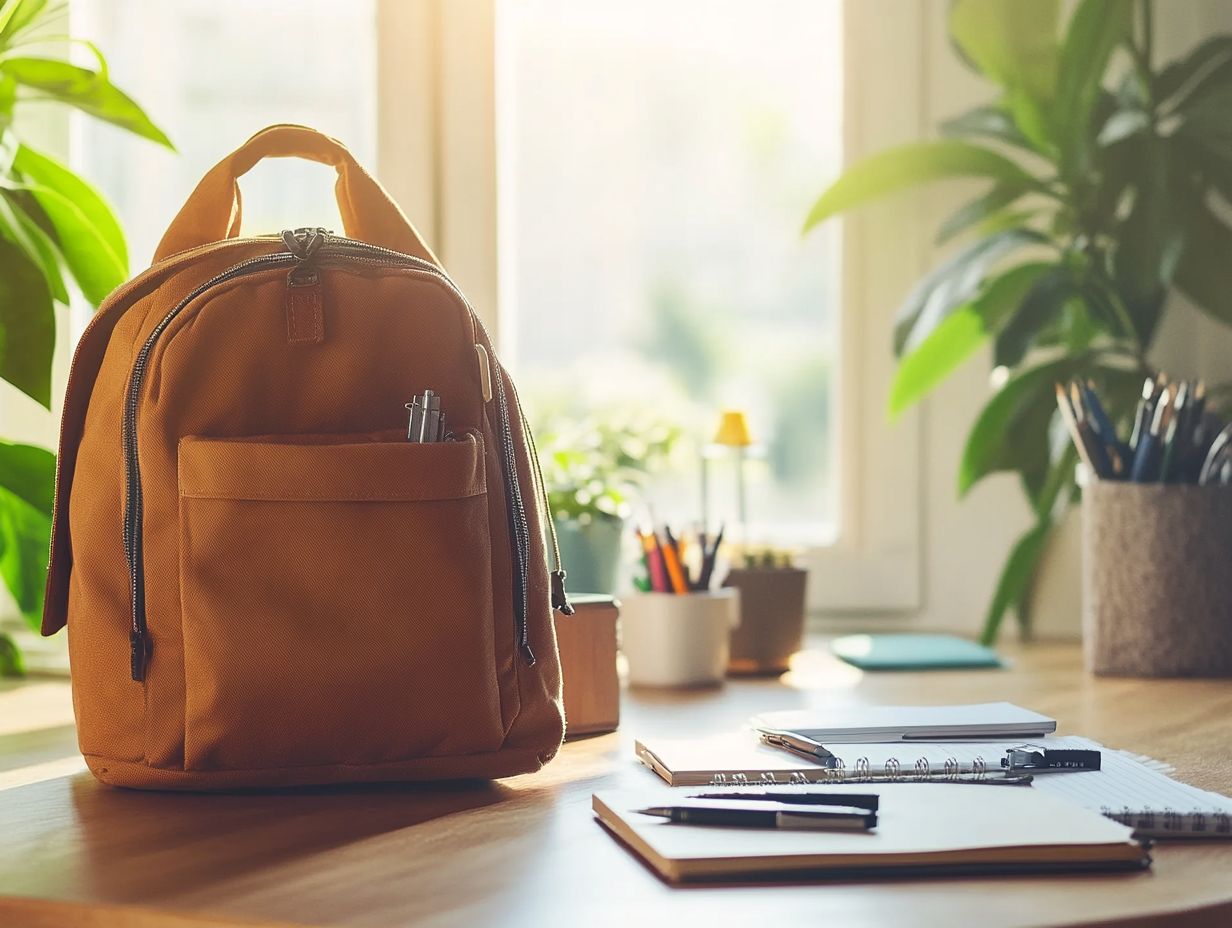
What are essential items and why is it important to maintain their longevity?
Essential items are everyday items that we use regularly, such as electronics, furniture, and clothing. It is important to maintain their longevity because it saves money, reduces waste, and ensures they continue to function effectively.
How can I extend the lifespan of my essential items and ensure their product health?
Here are several ways to maintain the longevity of essential items:
- Proper cleaning and storage
- Equipment cleaning
- Tool sharpening
- Regular maintenance
- Using them according to their intended purpose
What are some common mistakes people make that can shorten the lifespan of essential items?
Some common mistakes include not following the manufacturer’s instructions, neglecting regular maintenance, and using the items for purposes they are not designed for.
How can I properly clean my essential items to ensure their longevity?
The best way to clean essential items is to use the recommended cleaning products and techniques from the manufacturer. Avoid using harsh chemicals or abrasive materials that can damage the item.
Why is regular maintenance important in maintaining the longevity of essential items?
Regular maintenance, including lubricating tools and adhering to OEM instructions (Original Equipment Manufacturer instructions), helps to identify and address any issues before they become bigger problems. It also ensures that the item is functioning at its best and extends its lifespan.
What should I do with essential items that are no longer useful?
It’s important to dispose of these items properly to reduce waste and protect our planet.
You can donate or recycle them instead of throwing them away. Check with your local waste management for the best disposal methods.
Remember, keeping items in use for as long as possible is a great way to manage our resources responsibly.


